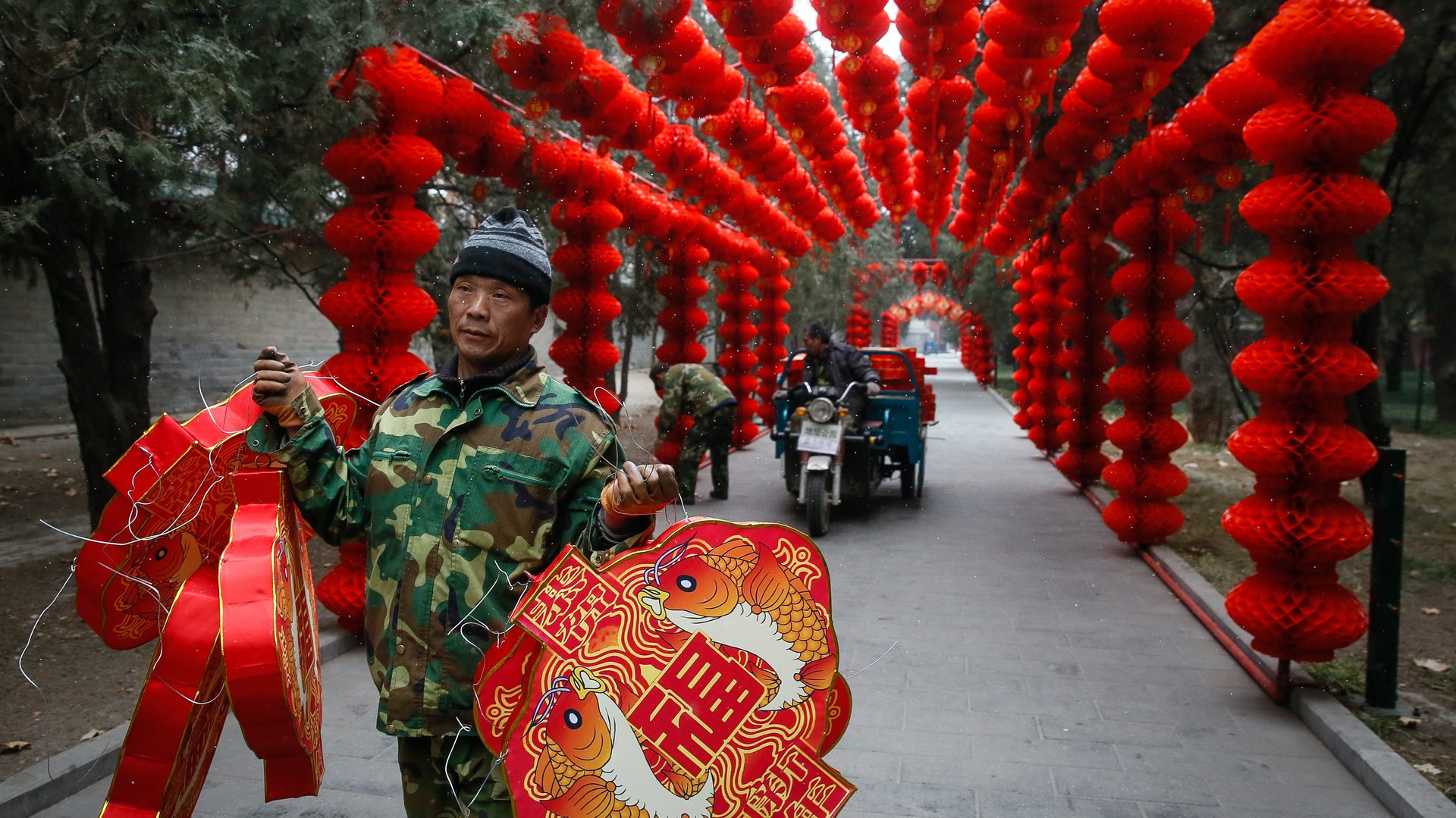To deal with cash envelopes and other Lunar New Year spending, China is letting banks hold fewer reserves
Chinese families usually take huge amounts of cash out of banks ahead of the Lunar New Year, a tradition that bothers Beijing to no end because it severely squeezes money supply in the markets. The cash ends up in little red envelopes given as gifts, and is also spent on booze, food, travel, and other holiday-related spending. This year the problem is worse as the weeklong holiday (starting on Jan. 27) extends over the month’s end, when companies also have to pay for salaries and taxes.


Chinese families usually take huge amounts of cash out of banks ahead of the Lunar New Year, a tradition that bothers Beijing to no end because it severely squeezes money supply in the markets. The cash ends up in little red envelopes given as gifts, and is also spent on booze, food, travel, and other holiday-related spending. This year the problem is worse as the weeklong holiday (starting on Jan. 27) extends over the month’s end, when companies also have to pay for salaries and taxes.
For signs of the liquidity stress, just look at the metric that essentially shows how expensive it is to borrow the Chinese currency on the mainland: the overnight implied deposit rate for onshore yuan. The key borrowing rate at one point jumped to 22% earlier this week—the highest since 2007. To combat the cash crunch, the central bank—the People’s Bank of China (PBOC)—has already injected a record amount of funds into money markets this week: about 1.13 trillion yuan ($164 billion).
In the meantime the PBOC, to pump more liquidity into markets, has allowed the biggest state banks to temporarily cut the amount of cash they must lock away as reserve, Reuters reported today (Jan. 20). The reserve requirement ratio (RRR) for the “big five” state banks—including ICBC, Bank of China, and China Construction Bank—has been lowered by 1% to 16%, the newswire said, citing unidentified sources, adding that authorities will restore the normal level at an appropriate time after the holiday.
Chinese financial media house Caixin reported on the ratio cut as well, saying it will last for 28 days (link in Chinese). The PBOC later confirmed on Weibo (link in Chinese) the cut and its time span, without specifying the amount.
At the end of last February, the central bank cut the RRR to 17% for all banks, in a bid to cushion the economic slowdown amid a weakening yuan and plunging stock prices. But this is the first time it’s cut the RRR for a limited time period, noted Chen Jianhen and Tang Wei of China International Capital Corporation. They made the observation (after the Reuters report) in a note published on Chinese news portals (link in Chinese), estimating the ratio cut will inject into markets around 600 billion yuan ($87 billion).